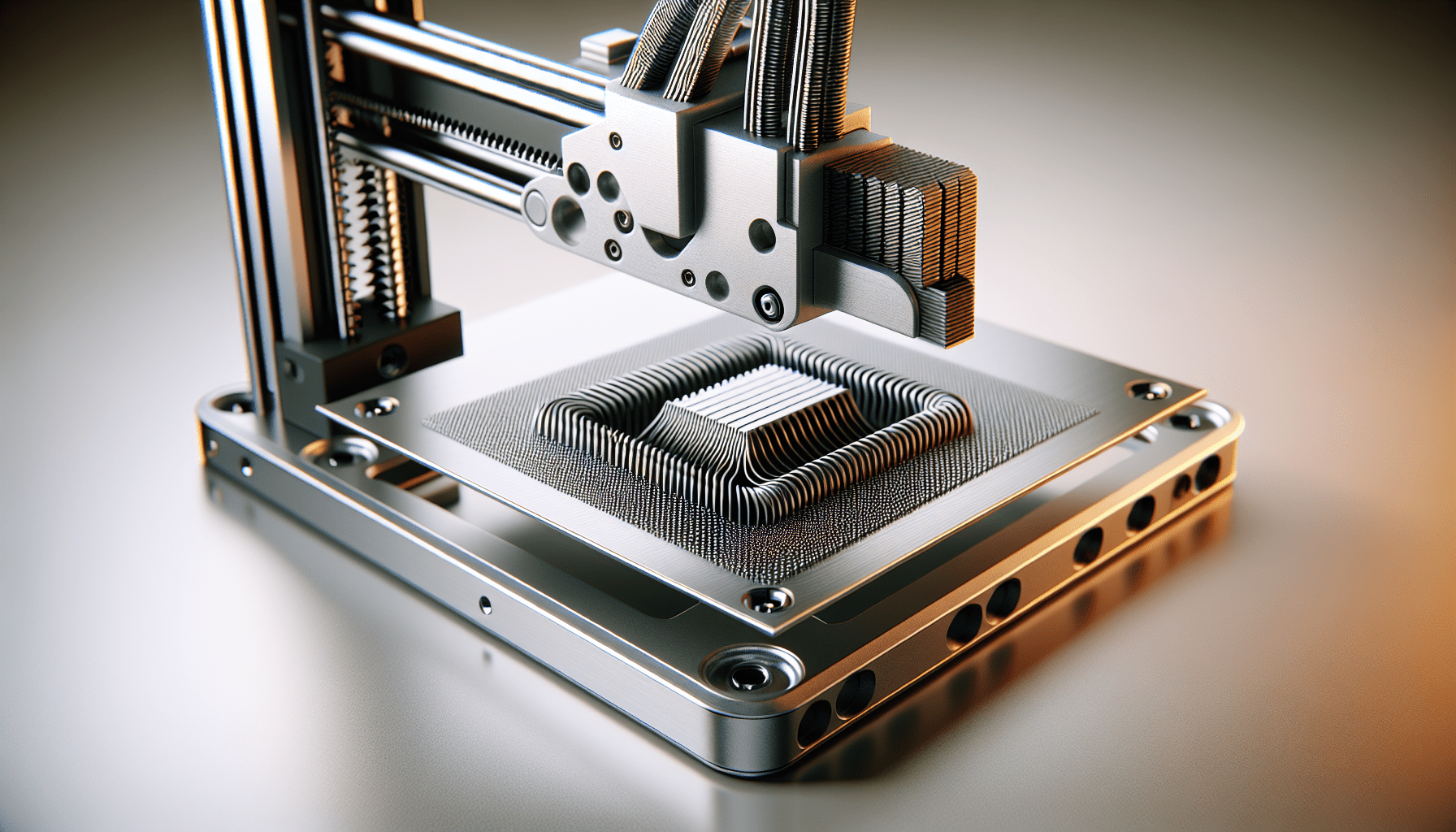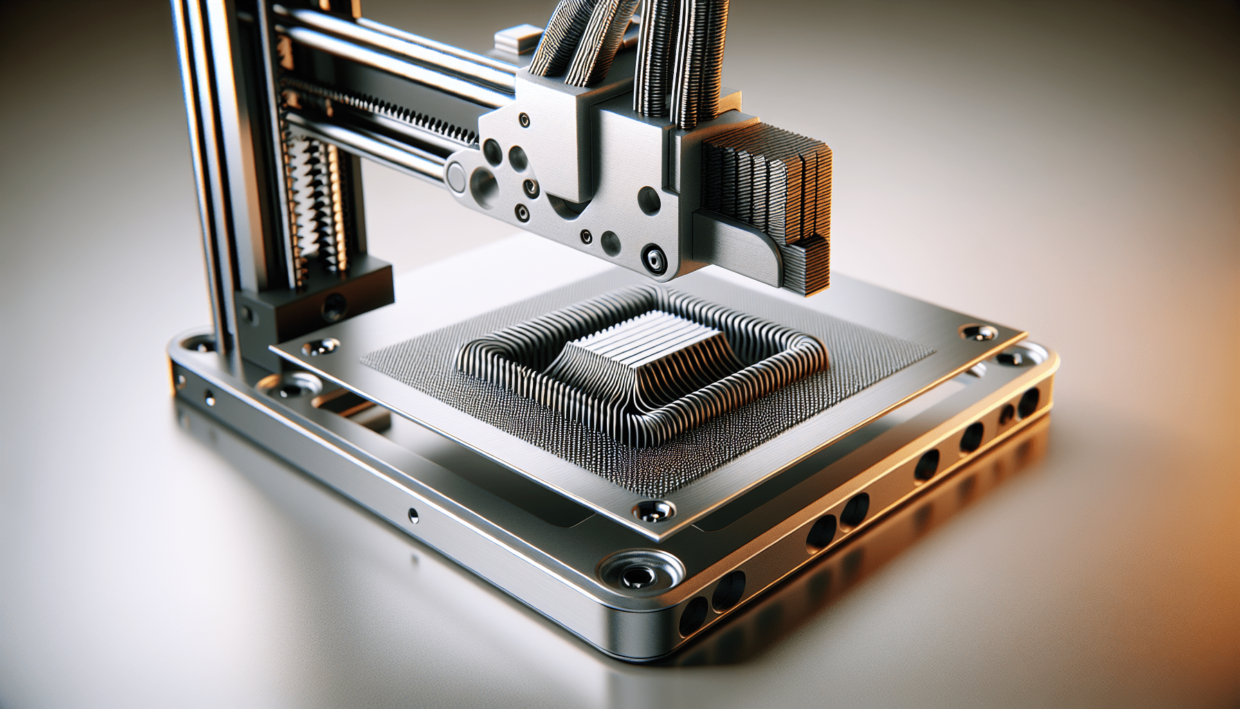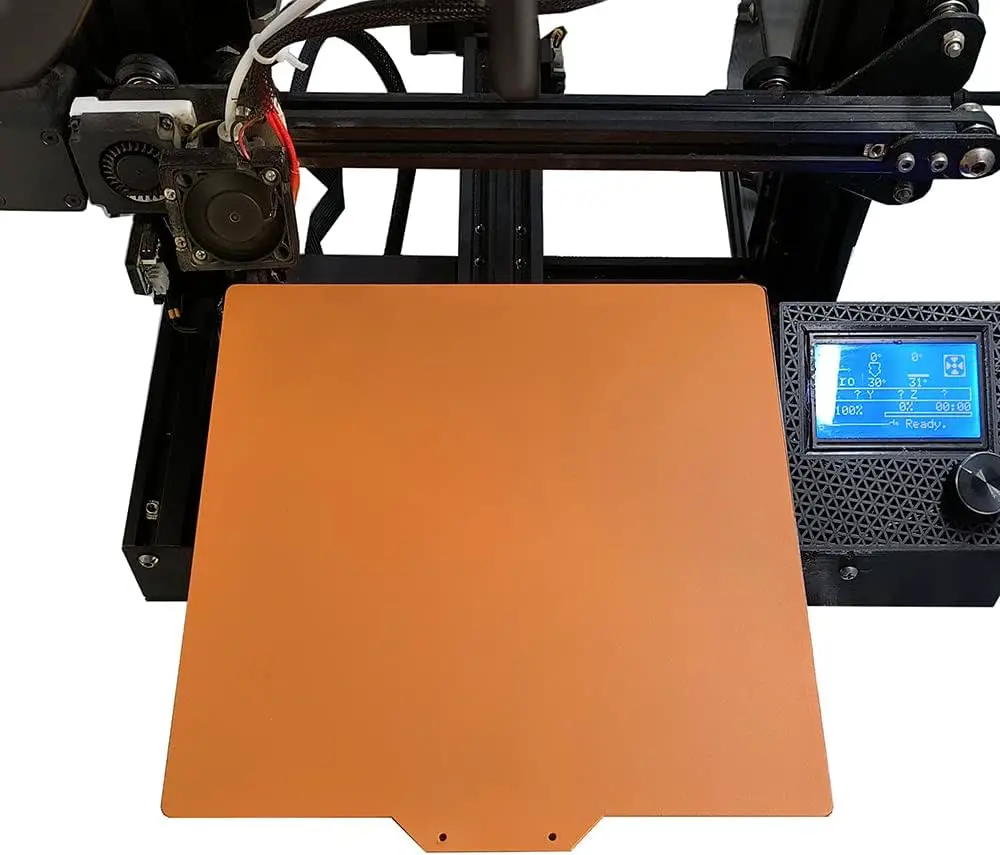
- arrow_back Home
- keyboard_arrow_right Technology
Master 3D Printing with the Right Hotbed

Technology Chris Wyatt 26 June 2024
You’re about to discover the wonders of mastering 3D printing with a magnetic hotbed. In this article, you’ll delve into the intricacies of different 3D printing hotbed surfaces and their adhesion properties. Specifically, you’ll explore why the magnetic hotbed stands out as the superior choice for achieving the best adhesion in your 3D prints. Through clear explanations and handy tips, you’ll soon be on your way to producing flawless prints every time. Have you ever wondered which 3D printing hotbed surface provides the best adhesion? Welcome to the fascinating world of 3D printing, where you will master the art of using a magnetic hotbed for your projects. In this detailed guide, you’ll discover everything you need to know to elevate your 3D printing journey using a magnetic hotbed.
What is a Magnetic Hotbed?
A magnetic hotbed is an innovative component of the 3D printer that has rapidly gained popularity due to its enhanced adhesion properties. Unlike traditional hotbeds, a magnetic hotbed consists of a flexible steel sheet with a magnetic base. This setup allows for easy removal and replacement of prints, making it a favorite choice for both beginners and seasoned 3D printing enthusiasts.
Benefits of Magnetic Hotbed
Before diving deep into the nitty-gritty, let’s quickly highlight some key benefits that make a magnetic hotbed a standout option:
- Exceptional Adhesion: Helps in minimizing warping and lifting.
- Easy Print Removal: Flexibility of the steel sheet allows for effortless removal of prints.
- Reusability: High durability allows for repeated use without deteriorating.
- Versatility: Compatible with a wide range of filaments.
How Does a Magnetic Hotbed Work?
The science behind a magnetic hotbed can be boiled down to its unique two-part structure: the magnetic base and the detachable steel sheet. When heated, the magnetic field ensures that the steel sheet remains in place, ensuring optimal adherence of the print without the need for adhesives or tapes.
Installation Process
Installing a magnetic hotbed is a straightforward process. Here’s a step-by-step guide:
| Step | Action | Description |
|---|---|---|
| 1 | Clean | Ensure the printer’s bed is clean and free from residues. |
| 2 | Apply | Attach the magnetic base sheet to the clean bed. |
| 3 | Attach | Place the flexible steel sheet on top of the magnetic base. |
| 4 | Align | Make sure the steel sheet is properly aligned. |
| 5 | Calibrate | Adjust printer settings for optimal performance. |

Types of Magnetic Hotbeds
Not all magnetic hotbeds are created equal. Depending on your specific needs and budget, you can opt for different types of magnetic hotbeds. Here are a few variants to consider:
Basic Entry-Level Hotbed
Ideal for beginners, these hotbeds offer decent adhesion properties and are budget-friendly. They usually have a lower magnetic strength but get the job done for simple projects.
Mid-Range Hotbed
If you are looking for a balance between cost and quality, mid-range magnetic hotbeds offer a good compromise. They feature a stronger magnetic field and better heat distribution.
Premium Hotbed
For 3D printing aficionados who want the best of the best, premium magnetic hotbeds provide maximum adhesion, longevity, and versatility. They are made from high-quality materials, ensuring consistent performance.
| Type | Magnetic Strength | Adhesion Quality | Durability | Price |
|---|---|---|---|---|
| Entry-Level | Low | Good | Moderate | Affordable |
| Mid-Range | Medium | Very Good | High | Moderate |
| Premium | High | Excellent | Very High | Expensive |
Key Features to Look For
When selecting your magnetic hotbed, it’s important to keep an eye on some crucial features to ensure you make an informed decision. Here are some essentials to consider:
Magnetic Strength
The stronger the magnetic field, the more firm the adhesion, which helps to prevent warping and lifting of prints.
Heat Distribution
Uniform heat distribution is key for achieving consistent print quality. Uneven heating can lead to defects and distortions.
Durability
A good magnetic hotbed should be able to withstand repeated use without degrading. Material quality plays a significant role in this aspect.
Compatibility
Ensure the magnetic hotbed is compatible with your 3D printer model. Some models may require specific dimensions or additional hardware for installation.

Optimizing Print Settings for a Magnetic Hotbed
The journey to mastering 3D printing with a magnetic hotbed doesn’t end with installation. You need to fine-tune various settings to achieve the best prints possible.
Bed Temperature
Setting the appropriate bed temperature is crucial for optimal adhesion. Most 3D printing materials have recommended bed temperatures to ensure proper bonding with the hotbed.
Printing Speed
Adjusting the printing speed can help achieve smoother prints. A slower speed often results in better adhesion and detail precision.
Layer Height
Layer height can significantly impact print quality. A lower layer height often results in smoother prints but increases print time. Higher layer heights can help with faster printing but may compromise detail.
Maintenance Tips
Proper maintenance is essential for prolonging the life and efficiency of your magnetic hotbed. Here are some tips to keep in mind:
Regular Cleaning
Keeping the steel sheet and magnetic base clean is critical. Use a non-abrasive cloth and avoid harsh chemicals that could damage the surface.
Inspecting for Damage
Regularly check the hotbed for any signs of wear and tear. Cracks or warping in the steel sheet can affect print quality.
Storing Properly
When not in use, make sure to store the steel sheet in a flat position to avoid bending or warping.

Troubleshooting Common Issues
Even the best magnetic hotbeds can encounter issues. Here are some common problems and their solutions:
Warping
Warping is often due to insufficient bed adhesion or improper temperature settings. Ensure the hotbed is set to the appropriate temperature and adjust print settings as needed.
Lifting
Lifting usually occurs when the magnetic base is not strong enough or the print speed is too high. Check the magnetic strength and adjust print speed and bed temperature accordingly.
Uneven Print Surface
If your prints are coming out uneven, it could be due to a misaligned hotbed. Ensure that the steel sheet is properly aligned and the bed is level before starting new prints.
| Issue | Possible Causes | Solutions |
|---|---|---|
| Warping | Improper temperature settings | Adjust bed temperature and print settings |
| Lifting | Weak magnetic base | Increase magnetic strength or lower speed |
| Uneven Surface | Misaligned hotbed | Realign steel sheet and level bed |
Advanced Printing Techniques
Once you’ve got the basics down, you can start experimenting with advanced printing techniques to take your projects to the next level.
Dual Extrusion
Using dual extrusion can help you create multi-colored or multi-material prints. This technique can be complex but offers stunning results.
Overhangs and Bridges
Printing overhangs and bridges can be challenging but rewarding. Adjust your print settings to include supports, which can then be removed post-printing for a cleaner finish.
Fine Detailing
For projects that require intricate details, adjust your layer height and print speed to ensure finer precision.

Choosing the Right Filament
Different filaments have varying adhesion properties, and some work better with magnetic hotbeds than others.
PLA Filament
PLA is beginner-friendly and works well with magnetic hotbeds. It has a low melting point, which makes it easy to work with.
ABS Filament
ABS offers greater durability but requires a higher bed temperature for optimal adhesion.
PETG Filament
PETG is a great middle-ground material, offering a good balance of ease of use and durability. It requires a moderate bed temperature and adheres well to magnetic hotbeds.
| Filament | Ease of Use | Durability | Bed Temperature (°C) | Compatibility with Magnetic Hotbed |
|---|---|---|---|---|
| PLA | High | Moderate | 50-70 | Excellent |
| ABS | Moderate | High | 100-110 | Good |
| PETG | High | High | 70-90 | Very Good |
Concluding Thoughts
Mastering 3D printing with a magnetic hotbed can significantly elevate your projects, offering exceptional adhesion, ease of use, and versatile capabilities. Whether you’re a novice or an experienced printer, understanding the nuances and benefits of a magnetic hotbed can empower you to create stunning, high-quality prints with minimal hassle.
Remember, the key to success lies in consistent practice, regular maintenance, and a willingness to experiment. Happy printing!
By following this comprehensive guide, you’re well on your way to mastering 3D printing with a magnetic hotbed, ensuring you can tackle any project with confidence and precision.
About Ultimate 3D
Learn everything there is to know about 3D Printers and the different components and printing materials.
Site Links
Copyright 2024 Ultimate 3D






Be the first to leave a comment